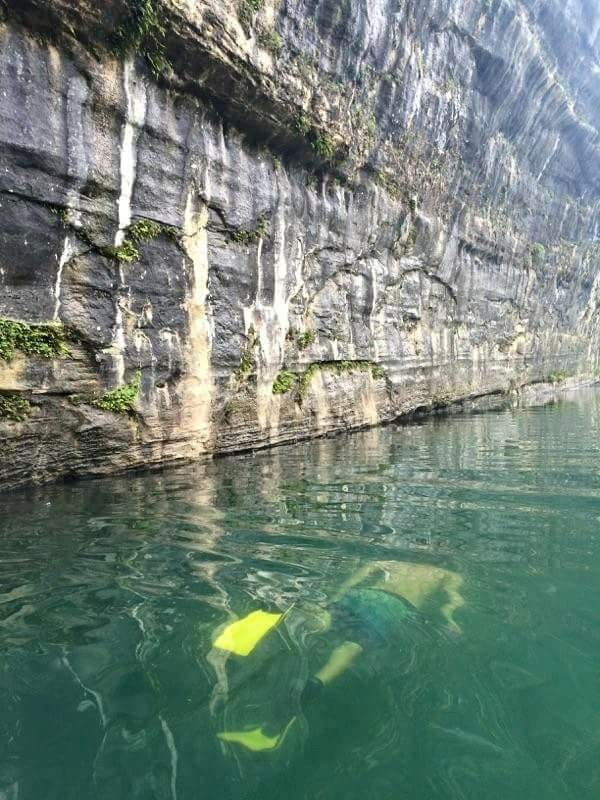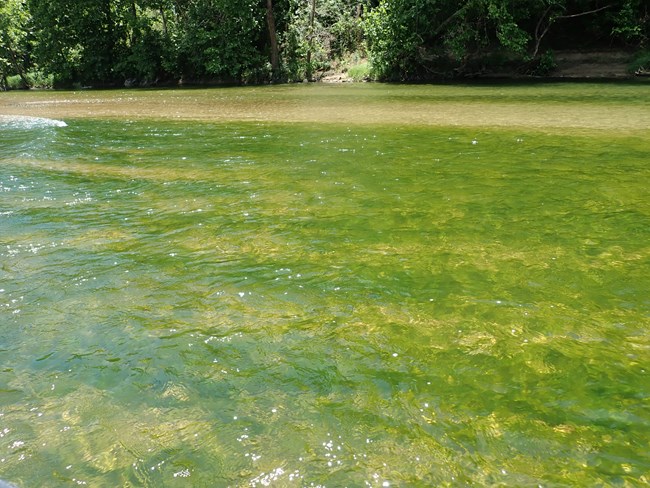
Zach Rowe There are 32 water quality sampling sites within the park where dissolved oxygen, pH, turbidity, temperature, bacteria (fecal coliform and E. coli), and nutrient measurements are collected and analyzed. Of the 32 sites sampled, 20 are on tributaries (streams or creeks flowing into Buffalo River), 3 are on springs, and 9 are on the river itself. Sampling many sites throughout the park, including outside of the main river, can help identify potential locations and sources that could be affecting water quality. At Buffalo National River’s water lab, turbidity and bacteria—E. coli—are primary focal points of study. E. coli is commonly used as an indicator of fecal contamination of freshwater because more than 90% of bacteria found in warm blooded animals’ excrement is E. coli. Most strains of E.coli are harmless, but a few can have ecological and human health impacts. Turbidity analysis reflects the clarity or cloudiness of the water and can inform how land-use change and erosion (natural or human-influenced) are affecting water quality. For example, when the river turns chocolatey brown, the turbidity is high due to increased particles in the water. By detecting which waterways have a higher level of turbidity and bacteria, Buffalo National River can effectively determine risk to the natural resources and public and develop future projects focusing on monitoring areas of concern.
This long-term monitoring is used to better understand water quality trends and advise Buffalo National River's resource management strategies. Using this knowledge, Buffalo National River can further investigate why changes might be occurring and determine how to allocate resources to best protect the park and its visitors. To ensure that visitors each year have an enjoyable experience recreating on the river, Buffalo National River also relies on visitors being active stewards. By practicing Leave No Trace and recreating responsibly, we can preserve our waters for future generations.

NPS Photo Algal Blooms
|
Last updated: July 30, 2021
